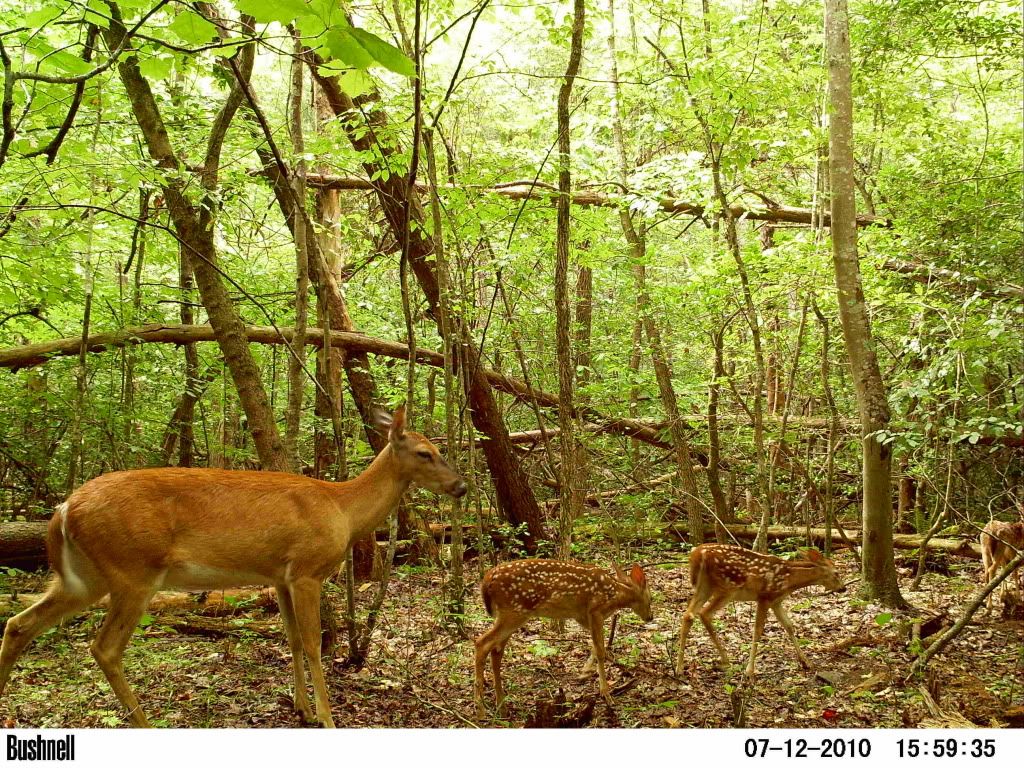I first caught a pic of these three with their mother in mid-July 2010 (the third fawn is just about out of the field of view on the right).
I suppose...ultimately...its hard to say that these three were actually birthed by this female. It's possible that another female's fawn(s) glommed onto her. But, whatever the case, these three stuck around with her. There are relatively few critters wandering the trail this camera is over. About the only thing I see along the trail with any frequency was (what I am pretty sure) were these deer. I'd get pictures of them off and on. Sometimes only two young ones would happen to be in the frame, and I'd think one had fallen victim to something. Yet, then later all three would invariably show themselves later.
Here, they posed nicely for a "6 month" family photo. You can see the eyeshine from the other two on the right side of the frame.
As summarized by DeNicola et al. in Managing White-Tailed Deer in Suburban Environments: a technical guide (2000; pg 11), although fawns/does as young as 6 months can breed (in areas with high resources), most do not become pregnant until they are yearlings. Furthermore, multiple-offspring births are usually reserved for does of 2.5 years or older. Triplets also usually only occur when conditions are favorable.
I'm not going to take the time to summarize every source out there on the frequency at which triplets occur in white-tailed deer females. However, as an example, the Pennsylvania Game Commission reported in 2008 as part of their Deer Management Plan for 2009 through 2018 (pg. 20) that the average embryo per adult female is roughly 1.8, which means that multiple-offspring births occur. In fact, they report that out of nearly 470 pregnant adult females sampled, 22 gave birth to triplets (with 333 giving birth to twins).


No comments:
Post a Comment